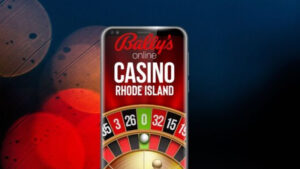
Online poker is a game of skill that involves competing with other players in various formats, ranging from simple cash games to massive multi-table tournaments with thousands of players fighting for the main prize. Its most popular variant, Texas Hold’em, is very easy to learn but insanely difficult to master. Poker is also one of the few forms of online gambling that can be turned into a steady source of income. Whether you’re looking for a chance to turn a profit or for a broad strategic experience, online poker is guaranteed to deliver, assuming you choose the right network.
Millions of Americans gamble on the Internet even though such gambling is illegal, unregulated, and offers no consumer protections. The market for internet gambling is run by offshore operators.
Some operate from regulated foreign jurisdictions, but many operate from small Caribbean islands that do little to regulate the activity and do nothing to protect consumers and minors. They even offer online sports betting and casino-banked games such as slots and roulette.
Given the inherently interstate nature of the Internet, which has no borders, and the demonstrated willingness of offshore operators to violate U.S. laws, the modernization of federal law such as the Wire Act of 1961 is necessary to keep illegal offshore operators out of the United States and provide strong and consistent enforcement protections that would not be possible should individual states enact legislation legalizing intrastate Internet gambling.
Offshore operators have flagrantly violated existing federal law to build a $4 to 6 billion per year U.S. market. The recent indictments of offshore operators have impacted the market, but not solved the problem. It has simply led to new operators taking new market share.
Choosing the right poker platform is a delicate balancing act that requires taking multiple variables into account. You need to assess the player pool’s size, find out whether the games you’re considering receive enough action, compare welcome bonuses, and investigate rakeback deals. It’s a lot of work, but you shouldn’t cut any corners here as your network choice will have a massive impact on your online poker experience. Before you move on to those difficult decisions, start by determining the available sites’ trustworthiness.
Even though a large player pool is a good indicator of a network’s legitimacy, we still recommend checking for proper certification. International networks tend to be licensed in tax havens such as Curacao, Gibraltar, Malta, or the Isle of Man. This allows them to be more competitive by offering better promotions and rakeback deals. In some European countries, such as France and Italy, you might be restricted to playing on sites that operate under the supervision of local regulatory bodies. This also applies to US-based players residing in Delaware, Nevada, and New Jersey, where online poker has been legalized over the past few years. If you live in any other parts of the US, you have no option but to join a “rogue” offshore site, such as Bovada or BetOnline. This is perfectly legal in most states as federal regulations don’t prohibit US citizens from playing poker online – they just impose harsh penalties on operators who offer such services without the appropriate paperwork.
Poker may be a skilled-based game, but the bonuses offered by high-profile sites match their casino equivalents in terms of size. Most operators will match your first deposit dollar for dollar up to a certain amount – usually $500-$1,500. A typical poker bonus won’t be credited to your account right away. Instead, you’ll have to release it in small chunks by earning VIP points, which are awarded for joining real money tournaments and playing cash games. This means that most poker bonuses can be treated like an additional rakeback deal, which will have a positive impact on your returns during the first few weeks spent on the site. The value of these promotions can range from 20% to almost 60% rakeback, so make sure you read the fine print instead of focusing on the advertised maximum limit. Unlike casino bonuses, poker bonuses don’t impose any additional wagering requirements – released money is available for withdrawal right away.
In many cases, you’ll also have the chance to claim a small free play bonus, usually worth between $20 and $50. The composition of such bonuses varies from site to site – some operators will award you cash, while others will give you access to free tournament tickets or exclusive freerolls. Please note that free play cash must be cleared before withdrawal to prevent bonus abuse.
When it comes to online poker, bigger is almost always better. High-traffic networks are capable of supporting more poker variants and hosting tournaments with larger guaranteed prize pools. If you choose a low-traffic site operating on a fenced local market, you may not be able to play games like Omaha or Stud as the number of people willing to play them might just be too low. Still, some poker players prefer small poker networks due to softer competition; small sites attract considerably fewer hardened regulars.
Tip: If your network is plagued by traffic issues, stick to peak traffic hours – the number of active players will be several times higher than the average.
Most poker platforms have a VIP rakeback program designed to reward returning customers for their loyalty. Most of these programs are volume-based – the more you play, the more rakeback you earn. The specifics differ from site to site, but such schemes usually involve earning VIP points for paying a certain amount in rake and exchanging them for cash at a rate determined by your loyalty level. Newcomers tend to receive less than 10% rakeback, while high-stakes pros can earn 20% or more.
If you’re a profit-oriented player, always prioritize rakeback over the welcome bonus and even traffic. A welcome bonus will eventually expire, and the traffic won’t have a dramatic impact on your cash game experience as long as your network is reasonably extensive. However, the rakeback will always have an effect on your profit margins and may make the difference between losing money and breaking even or turning a profit.
Online poker rooms give you access to many variants of poker that differ in rules and popularity. No-Limit Texas Hold’em is the most popular poker variant, both online and in land-based card rooms, so we highly recommend learning it first. Once you have a firm grasp of No-Limit Hold’em rules and strategies, you can consider branching out into Fixed-Limit games or switching to Omaha or Stud.
No-Limit Hold’em (NLHE) is a community card poker variant played at a single table by up to ten people. Before taking a seat at a poker table, each player purchases a stack of chips that will then be used for betting. In cash games, players can purchase additional chips between hands. At the start of each hand, every player is assigned two cards. These cards are called hole cards and are not visible to anyone else. Once the game begins, the players go through four rounds of betting. At the conclusion of each round but the final one, new community cards are placed face-up on the table. These cards can be used to form a winning combination by anyone remaining in the game. The specific order of business is as follows:
During each betting round, players perform their actions in a specific order determined by the dealer button’s position. Hold’em is played with a rotating dealer – the dealer passes the button to the player sitting on his left after each hand. To prevent 100% tight play, the two players seated to the left of the dealer have to put out blinds, i.e., post forced, predetermined bets. The first player posts a small blind, and the second – a big blind, which is usually two times bigger. The size of the blinds dictates the game’s stakes. These can be as small as $0.01/$0.02 (NL2) or as large as $100/$200 (NL20000), or even $200/$400 (NL40000).
Once the blinds are posted, players take turns making betting-related decisions. The action is always passed to the left and ends once everyone checks or someone wins the hand. Available actions are:
– Fold: If the player doesn’t want to match the bet necessary to continue playing the hand, he can give up and fold. A player who folds loses all the money he’s already contributed to the pot and can’t perform any further actions until the hand is resolved.
– Raise/Bet: If the player wants to act aggressively, he can bet or raise someone else’s bet. The minimum bet size is one big blind, and the minimum raise size is the previous bet plus one big blind. NLHE is a No-Limit game, so there are no restrictions on the amount of money you can contribute to the pot via a single bet. Players are allowed to go all-in any time they want.
– Check/Call: Every raise and bet has to be called (matched) by the other players. This also applies to the initial blinds. For example, if one player posts a $1 big blind and someone else bets $10, the first player has to call this bet and contribute another $9 to the pot to remain in the hand. If you’ve already matched the other players’ bets, you can pass the action without doing anything, i.e., check.
If one player forces his rivals to fold, he wins the pot. If the hand isn’t resolved by the end of the final betting round, the players go to showdown, and the one holding the best combination wins. If two or more players hold equally strong combinations, the one with the best kicker (a card that isn’t a part of the combination) wins. If the players are evenly matched after taking kickers into account, they split the pot into equal parts. If there’s a two-way split, both players claim 50% of the pot, and if there’s a 3-way split, all players claim 33% – and so on.
In poker, card strength is as follows, from strongest to weakest: A, K, Q, J, T, 9, 8, 7, 6, 5, 4, 2.
The ranking of Hold’em hands is as follows, from weakest to strongest:
A combination’s strength is determined by the highest card’s rank or the rank of the stronger pair/set in case of a two pair or full house. The second pair is considered only when the first pair/set is evenly matched. For example:
Suits don’t influence the rank of the cards or combinations – a flush of spades is equal to a flush of hearts.
A player with a big stack can’t bully someone with fewer chips out of a game by placing a bet his rival can’t match. The weaker player can always call such a bet by going all-in. In this scenario, the pot’s size is limited by the smaller stack’s size. If you bet $120 and your opponent only has a $50 stack, he can call you and play for $100 pot (your $50 + his $50).
Things get slightly more complicated with three or more players joining the all-in, but the general rule forbidding players from winning more than they’ve contributed on a player-to-player basis is maintained. If you’re confused about the application of these rules, the following showdown example should clear everything up:
Player A ($100) bets $40 with a pair of kings
Player B ($50) calls for $40 with a pair of jacks
Player C ($20) calls and is now all-in with a pair of aces
The main pot is $20 + $20 + $20 = $60 because that’s the only bet that all the players can make. Because player C holds a pair of aces, which is stronger than a pair of kings and a pair of jacks, he wins this pot.
The side pot is between players A and B because they can afford to make a $40 bet. The size of this pot is ($40 – $20) + ($40 – $20) = $40. Player A wins this pot because a pair of kings is stronger than a pair of jacks.
The end result is as follows:
Player A wins a $40 pot after placing a $40 bet, so he still has $100.
Player B loses $20 to player A and $20 to player C and is now left with $10.
Player C has $60 because he went all-in and won the main pot.
Let’s make things even more exciting and assume that both players A and B hold a pair of kings.
In this case, player C still wins the $60 main pot, but the $40 side pot is split 50/50 between players A and B. This has the following impact on the end result:
Player A is left with $80 because he lost $20 to player C.
Player B is left with $30 because he lost $20 to player C.
Player C still has $60 because he went all-in and won the main pot.
There are no differences in rules between online poker and live poker, but the speed at which online games unfold makes them an entirely different beast. An online player can play on several tables at the same time, allowing him to play significantly more hands. A typical live game progresses at a pace of about 30 hands per hour. Online, you usually play about 60 hands per hour, per table. If you play at four tables, you can complete about 240 hands per hour, which corresponds to eight hours of live play. As a result, consistent online players are less susceptible to swings due to the sheer volume of hands they play.
The more noticeable difference is that your poker face doesn’t matter online. You can’t get any tells from observing your opponent, so you have to focus on observing the way he plays. Online play lends itself to a more analytical approach, and successful online players usually rely on statistics and analytical skills instead of instincts. This trend is further reinforced by the existence of poker tracking software, which saves your hand history, crunches data for you, and provides you with stats-based reads on other players.
No-Limit Hold’em is the most popular poker variant, but there are many other options.
In Pot-Limit poker, players aren’t allowed to raise more than the pot’s total size. The maximum bet is calculated using the following formula:
(3 x Last Wager + Trail) + Starting Pot, where Trail is the action prior to the previous bet.
The player is allowed to raise less than the maximum assuming the raise is equal to or greater than any previous bet or raise in the betting round.
In Fixed-Limit games, players can’t size their bets; they can only decide whether they want to bet. The fundamental bet is referred to as a small bet and is always equal to the big blind. At some point in the game, usually after the flop and the river, this fixed amount is doubled to enable bluffing and aggressive play. This double bet is referred to as a big bet.
Omaha Hold’em is a variation of Texas Hold’em. Players are dealt four cards instead of four and have to use exactly two of those cards to form a winning combination with exactly three community cards. The rest of the rules remain the same. However, unlike Texas Hold’em, Omaha is usually played with the Pot-Limit betting structure.
There’s also a notoriously complex Omaha variant called Omaha Hi-Lo, in which each player makes two hands: a standard five-card high hand and a low hand with inverted card rankings (usually eight-high or lower to qualify). The pot in Omaha Hi-Lo is split between the high and the low.
Stud poker is a broad category of poker games in which players are given a mix of face-up and face-down cards over multiple betting rounds. Seven Card Stud is the most common version of Stud. At the start of the game, players are dealt two cards face-down, and one card face up. Blinds are replaced by a bring-in, which is paid by the player with the lowest-ranking up-card. After the first betting round, each player receives another up-card, followed by a second betting round, a third up-card and betting round, a fourth up-card and betting round, and the final up-card and betting round, which may be followed by a showdown. These rules can be summarized as “two down, four up, one down.”
Draw poker is a simplified version of poker in which each player is dealt a complete hand, face-down. After a round of betting, players can attempt to improve their hands by discarding any unwanted cards. While this variant isn’t available on any dedicated poker network, many casino platforms offer single-player games that are based on this model.
Unlike competitive poker, single-player video poker and three-card poker games can’t be played for profit as their rules always guarantee a house edge. Even though this advantage is minimal, it is sure to make the player go bust in the long run. To learn more about those games and ways to maximize your odds of turning a short-term profit, check out our articles dedicated to this topic, which can be found in the casino section of this site.
All-in: The act of committing your whole stack to a bet, raise, or call.
Ante: A forced bet placed in certain variants of poker.
Bankroll: The money you’ve dedicated to playing poker.
Betting structure: All the rules pertaining to betting in a particular poker variant.
Big blind: A forced bet placed by the player sitting to the left of the small blind.
Blinds: Forced bets placed by two players sitting to the left of the button.
Button: An object used to mark the dealer.
Buy-in: The money you have to pay to join a poker tournament or game.
Community cards: Cards shared by all the players participating in the hand.
Expected Value: The abstract, mathematically expected value of an action, bet, or game, abbreviated as EV. Bets that are more likely to win you money are referred to as EV-positive (EV+), while bets that are more likely to cost you money are referred to as EV-negative (EV-).
Flop: The three cards dealt after the first round of betting.
Flush: A combination formed by five cards of the same suit.
Freeroll: A free tournament that gives you a chance to win real money.
Full house: A combination formed by a set and a pair.
Hole cards: Your face-down cards.
Kicker: A card that belongs to your hand but isn’t a part of your strongest combination. Used to break ties between evenly matched hands.
Multi-table tournament: A large tournament played across multiple tables.
Nuts: The strongest possible combination that can be formed with a particular board.
One pair: A combination composed of two cards of the same rank.
Quads, four of a kind: A combination composed of four cards of the same rank.
River: The fifth and final card dealt after the third round of betting.
Royal flush: The strongest possible straight flush.
Single-table tournament: A tournament in which all participants play at a single table.
Sit & Go: A popular type of single-table tournaments.
Small blind: The smaller forced bet placed by the player sitting on the dealer’s left.
Stack: The total amount of chips or money the player has in play.
Straight: Five consecutive cards of different suits.
Straight flush: Five consecutive cards of the same suit.
Three of a kind, trips, set: A combination consisting of three cards of the same rank.
Tri-card poker: A type of single-player poker games offered by online casinos.
Turn: The fourth card dealt after the second round of betting.
Two pair: A combination consisting of two pairs.
Value bet: A bet made to extract more value when you believe you have the best hands
Video poker: A single-player poker game offered by online casinos.
Turning online poker into a steady source of income is an achievable goal if you’re willing to put in the necessary work. That being said, it can also be unpredictable, so you shouldn’t expect consistent, steady profits. Every poker player has to deal with upswings and downswings. Some months will be better than other ones. There’s not much you can do about that aside from continually expanding your horizons as a player. This is due to the inherent variance of the game – you can play your hand correctly, make the best possible decisions, and still lose due to a stroke of bad luck on the river. You can’t prevent bad beats, but you can limit their impact on your long-term results by making the right decisions and being resistant to tilt.
In No-Limit Hold’em, the first and arguably most important decision you have to make each time you’re dealt new cards is whether to play them or fold. You must factor in many variables, such as stack sizes, your position at the table, and the way your opponents are playing. Still, your entire line of reasoning must be based on your hole cards. Below, you will find a list of basic guidelines that apply in most situations.
These hands should be played aggressively regardless of your position at the table. Whether you see a raise or a strong bet, you should always see the flop, even if it means going all-in. If you don’t take advantage of the opportunities these hands provide, you’re guaranteed to bleed value over time.
These hands are generally considered strong, but playing them out takes more skill. You should always consider your position at the table. If you’re in a late position and will make your decisions after most other players, you can play aggressively and even expand your range to slightly weaker hands, such as KJ or A9. However, if you’re in an early position and can’t see what the other players are doing, you should play safe and possibly even tighten your range, folding weaker suited connectors and pocket pairs.
You should also pay close attention to what your opponents are doing – if they’re playing tight, consider tightening your range as well; if the game is loose, consider expanding it.
These hands are inherently weak, but it’s easy to overcommit with them, which can land you in trouble. For example, if you hold a weak pocket pair and completely miss the flop, your opponent is likely to hold a stronger pair. The same is true for weak aces – if you hit the flop and your opponent plays aggressively, he’s likely to hold an ace with a better kicker. If you commit too hard, you stand to lose a lot of money if he hits a pair by the turn or river.
The rule of thumb to follow if you’re inexperienced is to fold those hands when you’re in doubt or in early position.
Weak hands that can’t contribute to forming a straight should be folded regardless of the situation at the table. There are very few exceptions to this rule – for example, if you’re playing heads-up in a tournament and your opponent has a massive stack advantage, you might be forced to go all-in regardless of your hole cards.
Sizing your bets in No-Limit Hold’em is always tricky as it requires assessing your hand and the situation at the table correctly. Factors you should take into account include pre-flop action, community cards, stack sizes, and the range of cards your opponents might be holding.
If you’re drawing to complete a straight or a flush, you should also consider your odds and the pot size. Here’s an example: you’re holding QJ suited, you put your opponent on a pair, and the flop is KT2, with two of the cards matching your connectors’ suite. The cards that will allow you to beat your opponent (also known as outs) are any A (for an AKQJT straight), any 9 (for a KQJT9 straight), and any card of a matching suit for a flush. That’s 4 + 4 + 9 = 17 possible outs. There are 52 – 5 = 47 unknown cards left in the deck, so the probability of winning is 17/47 = 36.1%. This means that as long as you call for 36% of the value of the pot, you’re making a good investment. If, however, you call a bet that amounts to 50% of the total size of the pot, your decision will be EV-negative. Making the right calls will have a positive impact on your long-term returns while making bad calls will tank them.
Hands that can form a straight or a flush are often more valuable when you’re trying to eliminate someone from the game as they give you a chance to beat powerful pocket pairs like KK or AA, especially if your opponent doesn’t size his bets correctly to push you off the hand. This is also the reason you should play such strong hands aggressively. If you play them slow, your opponent might hit the flop and take you for a ride, which is guaranteed to result in the loss of a sizable portion of your stack. It’s best to bet at least four big blinds pre-flop whenever you’re holding a strong pocket pair. Don’t be afraid to re-raise pre-flop, especially if you’re holding a pair of aces or kings. That’s precisely what strong pocket pairs are for.
If you’re convinced you’re holding an unbeatable hand, also known as nuts, it’s always a good idea to place some value bets to maximize the amount in the pot. Let’s return to our previous example and assume that you’ve managed to complete an AKQJT royal flush on the river. Your opponent can’t possibly beat you at this point. He’s going to donate money every time he calls your bet, so make sure to place a nice bet on the river. Try to put yourself in your opponent’s shoes and make him think you’re bluffing. If you overdo it, you might cause him to fold. Note that not every situation is going to be this clear. Placing value bets will usually have no guarantee of victory. For example, if your ace on the river is off-suit, the opponent can still theoretically beat you with a flush. Nevertheless, assuming you’ve put him on a pair correctly, you should still place your value bet – bad beats like that are sporadic and won’t have a significant impact on your long-term profitability.
There are many tricks that can make you more successful if you use them at the right time. Below is a short list of easy-to-pull-off moves that should help you dominate low-stakes cash games.
Stealing the blinds: If you’re holding the button or are in a late position at a full ring table, don’t be afraid to steal the blinds. You can pull this off even with hands we classified as dangerous earlier. You won’t get a re-raise in most passive low-stakes games – and even if you do, a simple continuation bet might allow you to grab an even bigger prize of the flop.
Double barrel: Another useful strategy in passive games is to make a continuation bet with an extended range on the flop, and then again on the river. Timid opponents may be afraid to call your weak pair or draw.
Bluff on the river: Bluffing on the river is tricky, but if you use a poker tracker and notice your opponent avoiding going to showdown, you’ll be able to increase your profit margins. Look for players with ‘Went to Showdown’ statistic lower than 25%. Avoid targeting people who might call you even if they aren’t holding the nuts.
Note that these tricks are based on smart bluffing – you shouldn’t use them in every hand. It’s also imperative to remember that they work best against weak-tight players. If you’re facing constant aggression, you should drop the shenanigans, tighten your range, and let the laws of probability do the work for you.
Turning a profit isn’t just about the way you play; it’s also about the decisions you make before you even take a seat at the table. If you’re a cash game player, actively searching for fishy tables can have a more significantimpact on your returns than fixing a few small leaks in your playstyle. Here’s what you should look for:
– High players-to-the-flop percentage – loose passive play is considered the weakest playstyle in poker. If this stat indicates that many players go to the flop, there’s a high chance you will find several loose passive players to prey on.
– High average pot – hardened regulars tend to be careful about selecting the flops they want to fight for. A high average pot stat indicates that many bets are called with little regard for hand strength, which could mean that the table is populated by inexperienced players or that the game is very loose and aggressive.
– Stack sizes – most players who know what they’re doing enter the game with at least 100 big blinds and play with automatic reloads turned on, so if you see many smaller stacks, it’s a good indicator that at least some of the players are fishy. Note that this isn’t a good tell at medium stakes as playing with short stacks is common in this range.
In addition, if you’re a profit-oriented player, you should consider playing exclusively in the evenings. This is because recreational players tend to go online when they return from work, while regulars who have turned poker into a job keep playing during the day. This isn’t a big issue if you stick to the micros, but as you start climbing the stakes ladder, you will notice that games become considerably easier after 5 PM.
Learning how to play poker is more like picking up a hobby than learning how to operate a piece of machinery – even professionals who have won WSOP bracelets continue working to improve their skills.
In theory, improving as a player boils down to learning new strategies and tricks, integrating them into your poker arsenal via regular practice, assessing your results, and fixing leaks in your playstyle. Unfortunately, it’s even harder than it sounds due to the uncertainty that’s one of the main characteristics of this game. This unpredictability can make it difficult to assess your decisions correctly, leading to an unsatisfactory performance, which in turn increases your odds of tilting.
In poker lingo, tilt is a state of mental anguish and confusion that causes the affected player to make suboptimal decisions. Even worse, it’s not always easy to notice when you start to tilt – a good player continually reassesses not only the current state of the game but also his mental attitude. It’s worth noting that tilting doesn’t always result in increased aggression. In fact, losing your self-confidence can be even more devastating to your bankroll – timid, passive play is considered the worst possible playstyle. Poker playstyles can be grouped into four categories:
– Loose-Aggressive
– Loose-Passive
– Tight-Aggressive
– Tight-Passive
Loose players play a wide selection of hands, while tight players only play hands that have a high winning chance. Aggressive players don’t have any qualms about raising and betting, while passive players tend to avoid confrontation and are guided by their fear of losing. The tight-aggressive playstyle is considered optimal, while the loose-passive approach is viewed as counter-productive. The other two playstyles are suboptimal but can be successful in specific circumstances.
As mentioned above, even best poker players go on a downswing from time to time due to the game’s inherent variance. Once the inevitable happens, the only thing that can save you from going bust is proper bankroll management. If your bankroll isn’t capable of supporting playing at your current stakes, you should drop lower. For example, if you’re playing $2/$4 cash games but don’t have enough buy-ins, you should switch over to $1/$2 games until your rebuild your bankroll.
A good, conservative buy-in size for cash games is 100 big blinds.
Poker strategy is an incredibly complex topic that can’t be distilled to a few simple tips, but if you’re entirely new to this game, abiding by these rules should improve your overall experience.
Poker is a skill-based game, but the luck of the draw will have an impact on your short-term results. In extreme cases, you might have to migrate to significantly lower stakes to rebuild your bankroll without going for a reload. In addition, if you’re entirely new to the game, you’re likely to go bust a few times while learning the game at the micros. The bottom line is simple: if you aren’t a poker pro and poker is not your primary source of income, you should never deposit more than you can afford to lose. If you notice you’re spending more money than you’d like, ask your poker room to set a weekly or monthly deposit limit on your account.
It is highly advised for novice and intermediate players to stick to a single, relatively simple and popular poker variant. If you’re serious about improving your skills, choose one game, like No-Limit Hold’em, and focus exclusively on a single tournament or cash game type. You will have less information to process, allowing you to find flaws in your playstyle faster. Never become complacent if you want to advance to the higher stakes – read poker blogs, watch interviews, practice, and keep honing your mindset.
Try to avoid letting your emotions cloud your judgment. Tilt accounts for a massive percentage of all poker downswings, and let’s face it – even the most fun-oriented recreational players don’t like throwing their bankroll away. If you lose a hand in a particularly annoying way, or if you notice that you’re not enjoying yourself – take a break. In some cases, a few minutes can be enough to regain your composure, but if you feel like that won’t do, don’t be afraid to cut your session short.
Managing your bankroll may not be as exciting as playing the game, but it’s the cornerstone of proper strategy. Sticking to stakes you can afford to play and counting your buy-ins before each session won’t make you impervious to downswings, but it will protect you from going bust. Even if you’re a low-stakes player, never disregard the importance of correct bankroll control.
From a financial standpoint, a good rakeback deal amounts to a free income boost. You improve your profit margins without putting any effort into fixing flaws in your game. If two players are evenly matched in terms of skill, the one with a better rakeback deal is mathematically guaranteed to have better long-term results. If you want to play poker for profit, don’t underestimate the importance of a good rakeback offer.
Video poker and tri-card poker games offered by online casinos are EV-negative by design – the payout size is designed to give the house an edge regardless of what you do. If you’re interested in the competitive aspect of poker or if you want to turn poker into a steady income stream, you should avoid any games of this kind.
A: Absolutely. Over the past two decades, many people have managed to turn online poker into a primary source of income. Just keep in mind that being a poker pro isn’t easy. The game is very competitive regardless of the variant you choose – for most people, becoming a winning player is harder than earning the same money elsewhere. All in all, we recommend treating poker as a hobby. If someday you notice that you’re turning a steady profit and are thirsty for more, you’ll know what to do.
A: Yes, but it’s considerably more laborious than it used to be. Back in the glory days of poker, finding good no-deposit deals that allowed you to claim $50 for free wasn’t an issue. This is much harder today, but if you manage to find such a bonus, there’s nothing stopping you from clearing it and cashing out. In fact, the poker world is full of inspiring success stories, like the one of Chris Ferguson, who started playing poker with only one dollar, which he turned into a $20,000 bankroll over the course of six months.
A: Theoretically, you don’t even have to make an investment to start playing for real money. If, however, you want to minimize the risk of going bust, the minimum amount you need to start playing at the $0.01/$0.02 micros is $60 for 6-max No-Limit Hold’em cash games and $50 for full ring No-Limit Hold’em cash games (based on our bankroll management chart).
A: Absolutely. In fact, the whole online poker craze really took off when Chris Moneymaker did just that and won the WSOP Main Event in 2003. Qualifiers for live events are available to everyone. If you join a poker room that offers qualifiers and you deposit enough money to cover the buy-in, you’re good to go.
A: We recommend cash games as they’re a good way to pick up the basics that are relevant to every other format. Focusing on tournaments is more demanding. For example, if you play single-table tournaments, you need to adapt to the number of people left at the table as your opponents get knocked-out. Multi-table tournaments can become even more complicated – to be successful, you must preserve your stack, adapt to the rising blinds, and master the STT player skill set.
A: Yes and no. “Yes” because it’s an excellent way to learn the rules – if you don’t know them, it’s recommended to play for free at first. “No” because psychological pressure plays an integral part in poker, and with no money on the line, this pressure just isn’t there. You can’t really play mind games with an opponent that ultimately doesn’t care whether he wins or loses.
It’s a good idea to transition to real money games as quickly as possible to avoid picking up bad habits.
A: Most high-profile poker rooms support several deposit methods, but their availability depends on your area of residence. Usually, you’ll get to choose between Visa/MasterCard, two or three e-wallet services, and various local payment processors.
If you’re located in the United States, avoid credit card payments even if you’re trying to deposit to a locally-licensed site. American financial institutions tend to block all gambling-related transactions, including payments to poker rooms allowed to offer their services in Delaware, Nevada, and New Jersey. The rate of blocked transactions ranges between 25% and 45% depending on your jurisdiction and the institutions involved.
A: Withdrawal methods tend to overlap with deposit options when technically possible. For example, if a poker room supports Neteller deposits, you should be able to cash out via this e-wallet. Please note that in some cases, e-wallets are available exclusively to customers who have already used this method to make a deposit in the past.
A: If you’re determined to fund your poker account using Bitcoin or another popular cryptocurrency, your options are going to be extremely limited regardless of your area of residence. The only sites with decent traffic that accept crypto payments are Bodog, Bovada, and BetOnline.
A: Poker was developed in early 19th century America, as evidenced by several book mentions dating back to 1837. It’s unclear whether it was based on an older American game, a Persian game called As-Nas which follows very similar rules, or a French game called Poque.
What we do know is that poker wouldn’t be as popular today if it weren’t for the World Series of Poker, which popularized modern tournament play, several variants of Stud, and Texas Hold’em in the 1970s. WSOP’s success prompted several authors to publish in-depth poker strategy books, and by 1980s, poker was already depicted as a favorite pastime in American movies and TV.
The first massive poker craze began in 1987 when California legalized Hold’em, Omaha, and Stud. As went California, so went the nation – in 1988, Congress passed the Indian Gaming Regulatory Act, which legalized casino games on Indian land and allowed poker to spread all over the country. From Nevada to Atlantic City, poker fans were having a blast in land-based gambling establishments.
The first online poker hand was dealt in 1998, and the industry began expanding at a rapid pace. At the same time, hole-card cameras turned poker into a popular spectator sport. For the first time in history, professional poker players became admired celebrities. The golden era of internet poker began when Chris Moneymaker, an online-only player, won the WSOP Main Event in 2003.
Everybody wanted to be just like Moneymaker, and internet poker rooms became swarmed with young people dreaming of replicating his success. In 2006, the US government passed the Unlawful Internet Gambling Enforcement Act, but because the industry was flourishing, the act was largely ignored at the time. This party lasted until 2011, when the US Department of Justice indicted a number of high-profile poker businesses, including Full Tilt Poker and PokerStars, and unceremoniously booted international providers from the US market.
This disaster became known as poker’s Black Friday, and the market never really recovered from its consequences. On a brighter note, in the 2010s, Nevada, Delaware, and New Jersey all launched their own regulated internet gambling markets, which allowed companies like PokerStars, 888, or PartyPoker to return to the United States. Each poker room they launched was restricted to operating within the borders of a single state, so all regulated sites suffered from low-traffic issues. The authorities recently addressed this problem by allowing iGaming companies to share player pools across state borders, which turned struggling platforms like WSOP NJ and WSOP NV into great places to play.
A: In short, yes.
The fifty-year-old Wire Act must be modernized, with coordinated changes made to the Unlawful Internet Gambling Enforcement Act. Internet commerce in the area of gambling transcends state borders and requires clear federal policy and law setting forth what is allowed and what is not, as well as law enforcement and regulatory tools to ensure the laws can be enforced. For example, although recent indictments of certain operators accused of violating U.S. banking laws put a temporary dent in the Internet gambling market, the business is shifting to many other overseas Internet gambling operators who accept bets on all forms of gambling from American citizens. The mechanisms that do exist to sanction such operators do not give law enforcement authorities strong tools and they do nothing to shield American consumers from potential exploitation by these operators.
Given the inherently interstate nature of the Internet which has no borders, the enforcement protections that federal legislation would provide would not be possible should individual states enact legislation legalizing intrastate Internet gambling. The status quo means ceding the Internet gambling market to illegal offshore operators and to state governments that will continue to push the envelope and greatly expand the Internet gambling market. It means online poker would remain in legal limbo, out of the reach of federal regulation to ensure fair games and the integrity of operators. And it means continuing to drive thousands of high tech jobs and billions of dollars in potential state and federal tax revenue to offshore jurisdictions.
Only federal legislation can address the problems associated with illegal offshore gambling and online poker, and provide much-needed enforcement of our Internet gambling laws and consumer protections. Such legislation would establish a strict regulatory framework for poker while preserving the sovereign rights of states and tribes to opt-out of this activity.
A: Poker is a beloved pastime enjoyed by millions of Americans from all walks of life. It has played a strong role in our nation’s cultural history. Poker is not a house-banked game. Individuals play against each other, not the house, which receives only a fee for hosting the game.
The millions of Americans who are playing poker online deserve to know they are playing safely with law-abiding operators. Licensing and regulation of online poker in the U.S. would ensure American consumers are protected and that the jobs and revenues associated with this billion-dollar industry are realized here in the United States.
To the extent that poker is permitted under state laws, it is essential that there be well-designed minimum standards for regulation that can effectively address the principal public policy concerns that surround playing poker online.

Rhode Island has become the seventh state to launch an online casino market with the opening of Bally’s online casino on Tuesday. The new Rhode Island online casinos market will, […]

Eight North Carolina online sports betting operators are getting ready to launch on March 11. But one sportsbook has been able to jump the gun and make a limited launch […]

Caesars Digital, the online gambling arm of Nevada-based Caesars Entertainment, has signed two partnerships this week to expand its brand. The two deals will enhance its live dealer casino offering […]

This week, New York state Senator Joseph Addabbo was roundly criticized for introducing online casino legislation in a public letter. However, it did not come from anti-gambling campaigners, rival politicians, […]

Senator Joseph Addabbo (D-15) filed an online casino bill last month, and this month he’s been bashed by a local union (including hundreds of casino workers) over the idea. Senate […]

A bill aiming to introduce online casinos in Wyoming failed to pass the vote for a Senate discussion this week. HB120 was sponsored by Robert Davis (R-47). In a Thursday […]

A bipartisan group of Kansas lawmakers is looking to make wide changes to the state’s rules on sports betting advertising. Under Senate Bill 432, Kansas sports betting operators would be […]

The Mississippi House of Representatives recently passed a bill that aims to legalize online sports betting in the state. House Bill 774 passed late last week 98-14 in favor at […]
Are you ready to take your online gambling experience to the next level? Sign up for the LetsGambleUSA newsletter and get the latest news, exclusive offers, and expert tips delivered straight to your inbox.